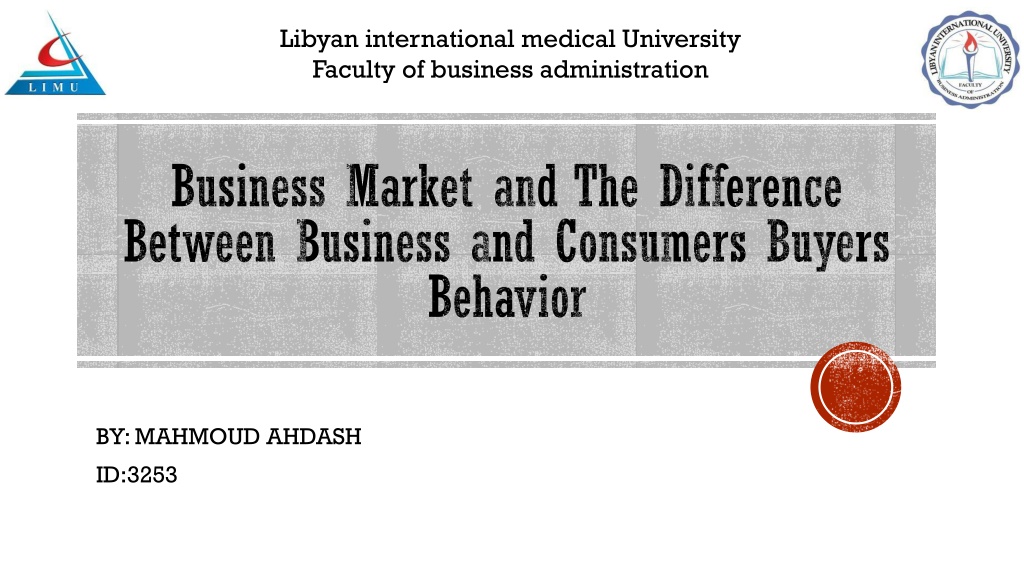Understanding Business Markets and Consumer Buyer Behavior
This academic report delves into the intricacies of business markets and consumer buyer behaviors, highlighting the distinctions in purchasing habits between corporations and individuals. It discusses how businesses market products and services to specific consumer groups, emphasizing the different motives behind consumer and business purchases.
Download Presentation

Please find below an Image/Link to download the presentation.
The content on the website is provided AS IS for your information and personal use only. It may not be sold, licensed, or shared on other websites without obtaining consent from the author. Download presentation by click this link. If you encounter any issues during the download, it is possible that the publisher has removed the file from their server.
E N D
Presentation Transcript
Libyan international medical University Faculty of business administration Business Market and The Difference Between Business and Consumers Buyers Behavior BY: MAHMOUD AHDASH ID:3253
TABLE OF CONTENTS 01: Introduction 02 Business Market 03The Difference Between Business and Consumers Buyers Behaviours 04:Conclusion 05:References
INTRODUCTION Clothing businesses that promote new fashions and outfits that clients may buy right away in their stores.
BUSINESS MARKET Individual or organizational marketing is referred to as business marketing. It enables them to resell products or services to other businesses or organizations.
THE DIFFERENCE BETWEEN BUSINESS AND CONSUMERS BUYERS BEHAVIOURS Consumers and corporations have vastly different purchasing habits. This is because, whereas consumers buy goods and services for personal consumption, businesses buy them to use in the production of other commodities or to resell to other firms or consumers. Both groups have diverse participants, characteristics, purchasing processes. impacts, and
CONCLUSION A business market is a method a company uses to sell products or services to a specific group of consumers. businesses buy these things either to manufacture other goods or to resell them to other businesses or consumers.
REFERENCES Finnegan, Ruth (1974). "How Oral Is Oral Literature?". Bulletin of the School of Oriental and African Studies. 37 (1): 52 64. doi:10.1017/s0041977x00094842. JSTOR 614104. S2CID 190730645. John Miles Foley. "What's in a Sign" (1999). E. Anne MacKay (ed.). Signs of Orality. BRILL Academic. pp. 1 2. ISBN 978- 9004112735. ^























